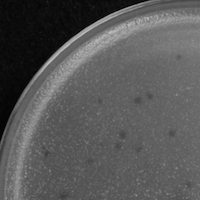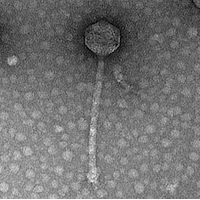Mycobacterium phage Pathlyssa
Know something about this phage that we don't? Modify its data.
| Detailed Information for Phage Pathlyssa | |
| Discovery Information | |
| Isolation Host | Mycobacterium smegmatis mc²155 |
| Found By | Ayla Hubbs & Delilah Jimenez |
| Year Found | 2025 |
| Location Found | Spokane, WA USA |
| Finding Institution | Gonzaga University |
| Program | Science Education Alliance-Phage Hunters Advancing Genomics and Evolutionary Science |
| From enriched soil sample? | Yes |
| Isolation Temperature | 22°C |
| GPS Coordinates | 47.667578 N, 117.398998 W Map |
| Discovery Notes | This phage was isolated from slightly damp and tightly packed soil near the edge of a manicured lawn. There were originally pieces of dry grass, wood chips, and leaf litter in the collected sample. When we took the soil sample it was nearing the end of August, so it was very sunny and dry outside. |
| Naming Notes | The name comes from the greek root word “path”, meaning disease and the greek root word “lyssa”, which is associated with the goddess of fury, rage, and rabies. We combined these roots to create a phage name that meant an anger or hatred towards disease. Ironic, considering that bacteriophages kill bacteria. |
| Sequencing Information | |
| Sequencing Complete? | No |
| Genome length (bp) | Unknown |
| Character of genome ends | Unknown |
| Fasta file available? | No |
| Characterization | |
| Cluster | Unclustered |
| Subcluster | -- |
| Annotating Institution | Unknown or unassigned |
| Annotation Status | Not sequenced |
| Plaque Notes | The plaques are small, around 1-3mm in diameter. The edges are not hazy at all, and very clear as to where the phage lysed the host bacteria. The plaques take very long to form, around 1-2 weeks at room temperature. |
| Morphotype | Siphoviridae |
| Has been Phamerated? | No |
| Publication Info | |
| Uploaded to GenBank? | No |
| GenBank Accession | None yet |
| Refseq Number | None yet |
| Archiving Info | |
| Archiving status | Not in Pitt Archives |
| Available Files | |
| Plaque Picture | Download |
| Restriction Digest Picture | Download |
| EM Picture | Download |

